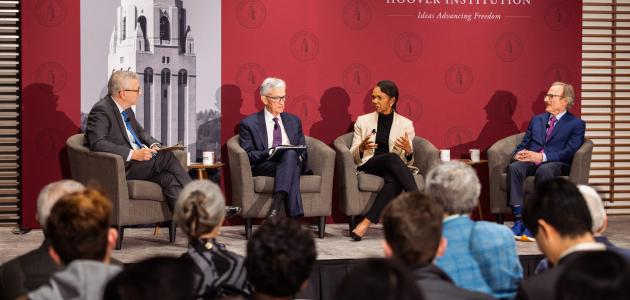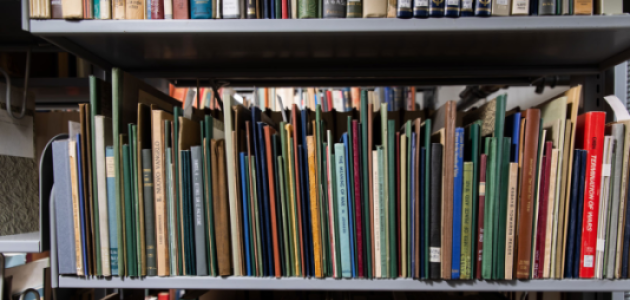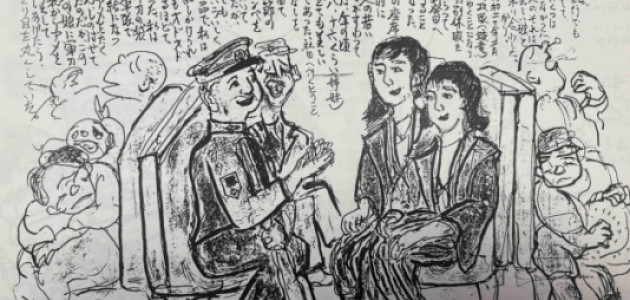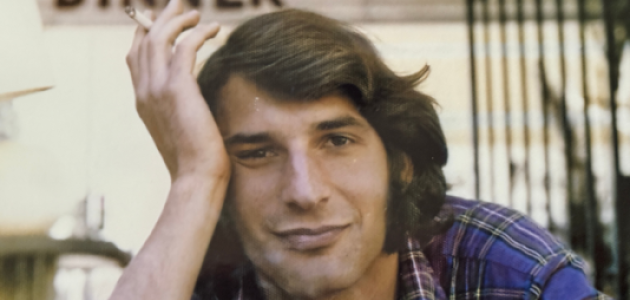STANFORD—Each year, thousands of researchers from around the world visit the Hoover Institution Library and Archives to examine their vast store of materials. From the political cartoons of Louis Raemaekers from World War I to the recordings of Radio Free Europe/Radio Liberty (RFE/RL) broadcasts during the cold war to the tapes of William F. Buckley Jr.'s Firing Line television series, more than 5,000 separate collections of historical documents are housed in the library and archives. Each collection plays a vital role in understanding the history of the twentieth and twenty-first centuries.
For more than 80 years materials have arrived in virtually every medium imaginable. Much of the archival documentation in the Hoover collections, however, was generated in times of political turmoil with whatever paper was at hand—often of very poor quality. Political posters, some as large as three-by-five feet, can be torn and damaged. World War II–era recordings on glass disks, even recordings on reel-to-reel tapes from the 1980s in the RFE/RL collection, show signs of deterioration.
In an attempt to stem, as some have described, this slow-burning fire of crumbling rare materials, the Hoover Institution has engaged in an active preservation program beginning in the early 1980s. With the generous support of the Earhart Foundation, the library and archives recently further modernized their preservation program to ensure that these valuable collections are available to future generations of researchers.
“Collecting, preserving, disseminating, and researching our archival holdings are essential in our approach to the investment of knowledge and scholarship,” said John Raisian, the Tad and Dianne Taube Director of the Hoover Institution. “The opportunity to create a state-of-the-art preservation lab allows us to protect our precious materials indefinitely, including audio and visual formats along with traditional printed documents. We are delighted that this opportunity provides a distinctive strength in our efforts to continue as a preeminent private repository focusing on war, revolution, and peace.”
The history of the library and archives dates back to 1919. Following the end of the Great War, Herbert Hoover, who had headed up the Commission for Relief in Belgium, donated his records from this effort to Stanford University at the urging of his former professor Ephraim D. Adams. In 1919, Hoover donated $50,000 to Stanford University to aid in collecting primary materials on the Great War.
Although the original collections focused on World War I, the Hoover War Library (as it was then called) grew to include materials of movements that preceded World War II. Following World War II, the collecting activities shifted to East-West relations. Other collections added during the twentieth century include the papers of noted economists Milton Friedman, Friedrich Hayek, and other members of the Mont Pèlerin Society.
Today the library contains nearly a million volumes; the archives houses some 60 million documents and 100,000 political posters. A gradual change in the types of materials that constitute the collections has occurred during the past few decades. Whereas early collections feature papers, more recent collections include or consist primarily of film, audiotapes, and videotapes.
“Two major challenges that staff members face in preserving materials,” said Lisa Miller, associate archivist, “are the poor quality of early-twentieth-century paper, which has become increasingly brittle over time, and the deterioration of film and magnetic tape.” The new conservation laboratories at Hoover will address these issues with state-of-the-art technology in a newly expanded space.
For paper, a new water treatment system, in which materials are treated to remove impurities and neutralize acidity, has been added to the already existing book and paper conservation laboratory. A new suction table and fume hood for poster-size material enable staff to work safely with solvents and to clean mold from incoming material. Meanwhile, because microfilm remains one of the best ways to ensure that the contents of paper are preserved, the microfilm lab has been specially renovated to optimize the microfilming process.
During the past decade, a dual approach has emerged in which archival repositories use traditional microfilm for preservation and rely on digital-use copies to provide use copies and worldwide Internet access (in some cases). A new digital imaging laboratory includes flatbed scanners and a sophisticated digital camera system that accommodates posters and other large-format materials.
For audio materials, a new audiovisual laboratory will make it possible for archives staff to create both high-resolution digital copies for preservation and low-resolution surrogates for access by researchers. Due to the large digital files this process creates, a digital mass-storage system is in place, with tape backups for insurance against disaster. “To date, more than five hundred unique and deteriorating audio items have been preserved using best-practice specifications in the laboratory,” said Miller.
The new preservation program will enable researchers in the twenty-first century and beyond to continue to make use of the rare and important materials at the Hoover Institution Library and Archives.












